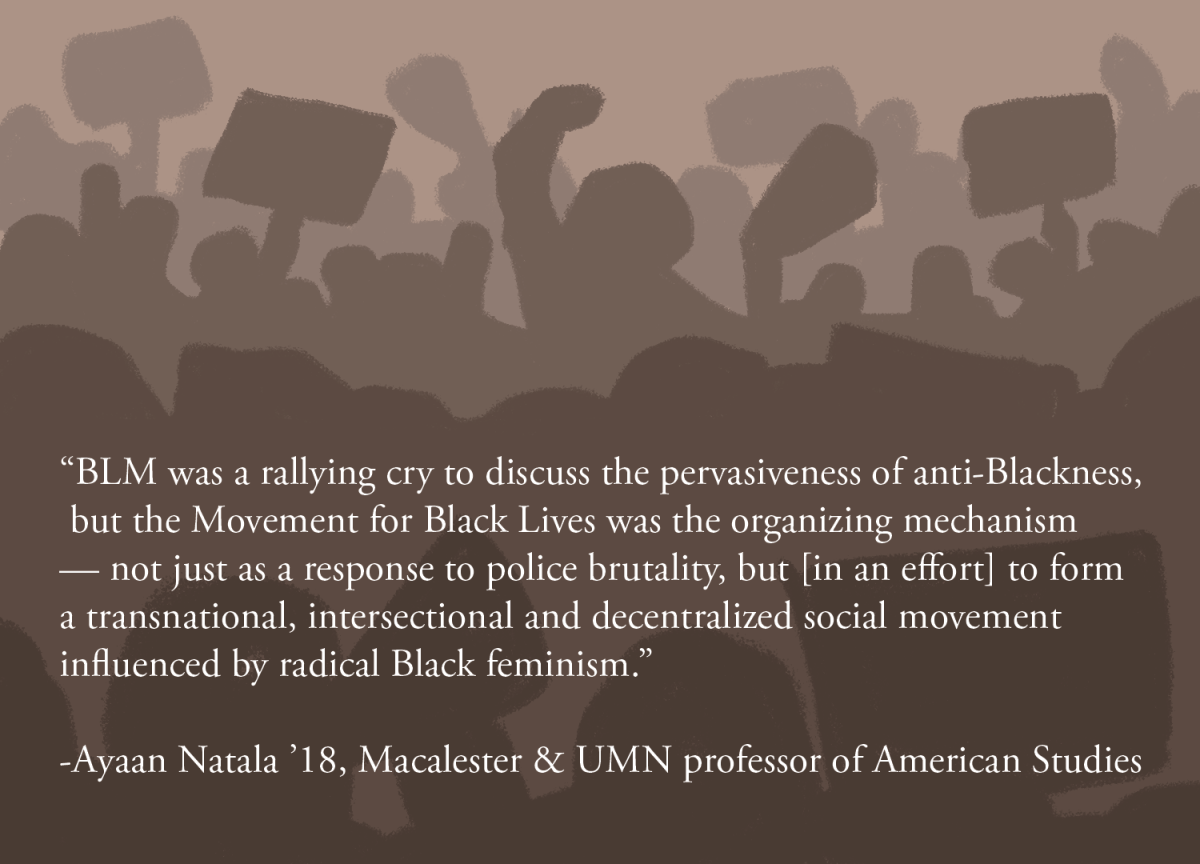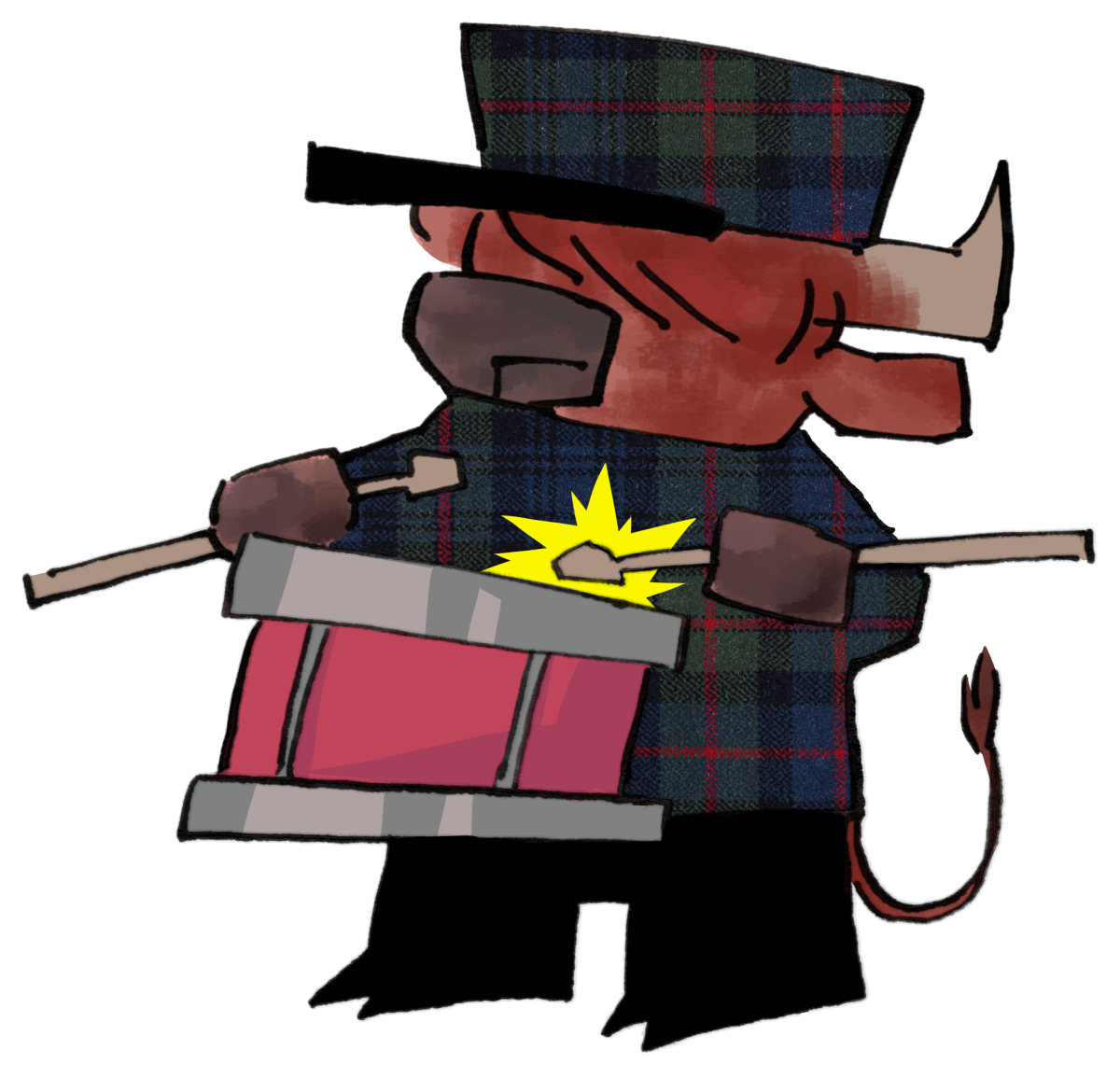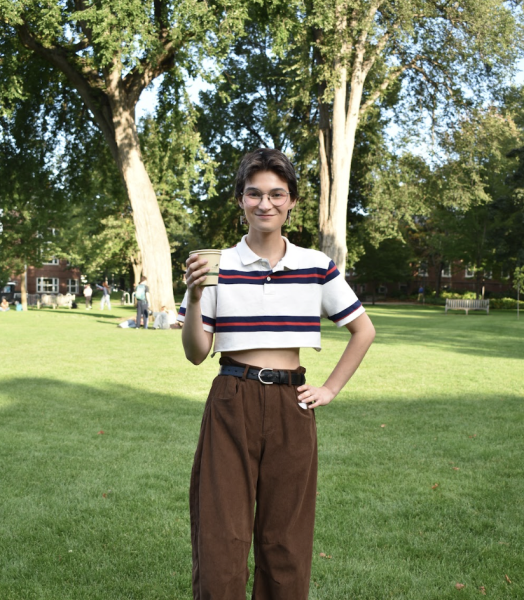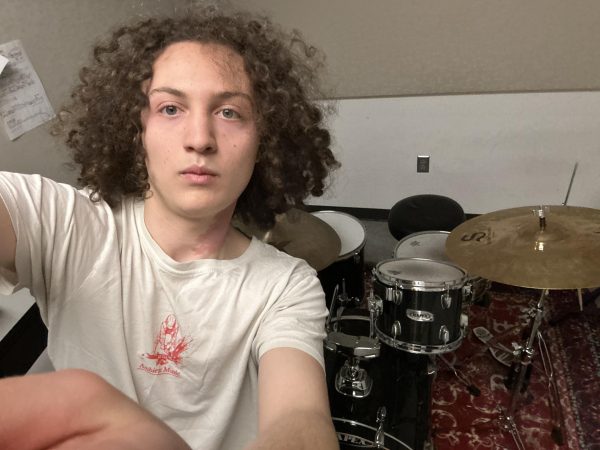*Trigger warning: This article discusses police brutality.
On Wednesday, March 19, the University of Minnesota (UMN) hosted a lecture discussing the past and present injustices perpetrated within American policing, entitled “Building an Archive for Police Reform.” The event featured two researchers: University of Michigan Professor of history Matthew Lassiter and UMN Professor of American Studies Ayaan Natala; along with one non-profit president, Michelle Gross, co-founder and President of Communities United Against Police Brutality (CUAPB).
UMN’s Institute for Advanced Study hosted the lecture as a part of their “(In)Justice Series” which, in partnership with the Andrew W. Mellon-funded Sawyer Seminar on Just Policing, “critically examines how policing intersects with broader societal issues across the globe and explores efforts to transform policing” according to their website.
Lassiter presented his work tracking police brutality in Detroit during the civil rights era for the ‘Detroit Under Fire’ exhibit. This digital exhibit is part of a greater collaboration between the Michigan Carceral State Project — an interdisciplinary project to document and challenge police brutality, immigration detention and incarceration — and University of Michigan HistoryLabs to develop a full history of policing in Detroit and in Wayne County more broadly.
Detroit Under Fire investigates police brutality and misconduct incidents from 1957, when the NAACP and the American Civil Liberties Union (ACLU) launched a review of the Detroit Police Department (DPD), until 1973, the same year Detroit elected Coleman Young as its first Black mayor. Lassiter and his team identified 188 homicides committed by on-duty and off-duty law enforcement agents in the same years.
“This is definitely an undercount,” Lassiter said. “Many people got killed and never even made the newspapers, and unless their family escalated it, it came to the attention of the mayor, or the community relations kind of civil rights agency where they filed a civil lawsuit. So we think we’ve identified 75% of the official total.”
Lassiter added that almost 80 percent of those killed by law enforcement were Black, and around 21 percent were teenagers. The largest category of those killed were unarmed Black men who were fleeing the scene of low-level property crimes.
In addition to displaying a map produced with ArcGIS tracking the homicides and other forms of police brutality from 1957-1973 and providing a summary of the DPD’s practices of suppressing and covering evidence, Lassiter also highlighted different means of resistance.
The Adult Community Movement for Equality (ACME) and Afro-American Youth Movement (AAYM), established a headquarters in the Eastside of Detroit on Kercheval Avenue. They eventually came to focus primarily on addressing police brutality with efforts to support community members in finding childcare, housing and employment.
“Much of the evidence we found was from people’s tribunals and civil lawsuits by families of those under arrest … community activism and demands for justice created the archive that makes documenting and teaching this history of police violence possible,” Lassiter said. “And that’s true in the current moment as well as in the past. I think that’s one of the key lessons that I learned in this project — I thought we were researching police violence, but we were actually researching community activism and resilience.”
While Lassiter’s portion of the talk primarily focused on the archives of incidents of police brutality from 1957-1973, Michelle Gross, co-founder and President of Communities United Against Police Brutality (CUAPB), followed by a presentation of how CUAPB is creating a space to document and record police brutality today. CUAPB is a volunteer based organization in the Twin Cities that provides advocacy for people dealing with the effects of police brutality.
“Our overriding goal is to create a climate of resistance to abuse of authority by police organizations and to empower local people with a structure that can take on police brutality and actually bring it to an end,” CUAPB says in its mission statement.
CUAPB bases its mission on three types of services — advocacy, political actions, and education. In her talk, Gross focused on a specific feature of the organization’s work, the officer records lookup which Gross describes as their most “popular” archive. The archive allows users to search for formal police complaints from around 6,000 officers out of the approximately 10,000 who work in Minnesota.
“We get a lot of enthusiasm around [the database], because people get a ticket by somebody — they want to know, what’s the deal with this cop? And they find it,” Gross said. “And these records have also been useful for the Hennepin County prosecutor’s office to begin to build a Brady database.”
A “Brady” database is a database or file system often used by prosecutors to track and manage information about police officers that could be relevant to a criminal case.
Gross then transitioned to speaking on the police complaint database’s relevance in analyzing the murder of George Floyd by former Minneapolis Police Officer Derek Chauvin.
“I was able to identify Derek Chauvin, mostly because I had a videographer buddy of mine blow up his badge really large so we could see the badge number. And since we keep an active list of Minneapolis Police badge numbers, we were able to see that that was Derek Chauvin,” Gross said, describing her first time seeing Darnella Frazier’s video of Floyd’s murder.
“I knew it was him right away. I recognized him because we had so many complaints about him, but I wanted to make sure we weren’t going to get sued for defamation, so we double checked his badge number, and within an hour, we were able to put up his entire record,” Gross added. “Most people do not realize that prior to murdering George Floyd, Derek Chauvin had been involved in four prior deadly force incidents, and he also had 32 complaints against him that the Minneapolis Police had never acted on.”
Pointing to failures by Minneapolis law enforcement to prevent further violent force from Chauvin, Gross emphasized the importance of organizations like hers to combat and prevent police violence through advocacy and action.
Gross continued a common theme of the lectures last Wednesday, illustrating that when police fail to prevent violence from their force, regular people must step in.
Natala rounded off the lecture with a presentation of her in-progress dissertation: “From George Bonga to George Floyd: Recovering Black Minnesotans’ Freedom Dreams Amidst the Movement for Black Lives.” Natala’s work, completed through oral histories, explores how memories and experiences of partaking in the Black Lives Matter (BLM) ecosystem in Minneapolis influences Black Minnesotans’ perspectives on freedom. After an explanation of her work, Natala discussed the distinction between the mainstream BLM movement and the Movement for Black Lives.
“BLM was a rallying cry to discuss the pervasiveness of anti-Blackness, but the Movement for Black Lives was the organizing mechanism — not just as a response to police brutality, but [in an effort] to form a transnational, intersectional and decentralized social movement influenced by radical Black feminism,” Natala said.
Natala’s work, informed by her position as a Black feminist scholar, draws from her own personal experiences within Minneapolis’ BLM network and the national Movement for Black Lives. Natala explained that her experiences navigating following the police killings of Jamar Clark and Philando Castile in 2015 moved her to attend the national convening of Movement for Black Lives in Cleveland.
“I was a 19 year old college student who somehow found the courage to put on a fluorescent jacket and stop oncoming traffic at direct actions to protest the police killings of Jamar Clark and Philando Castile,” Natala said. “It was the protest for Jamar Clark where I said ‘I will become an academic to write about what is happening to us.’”
While Natala’s research focus has been shaped through the conversations and art she encountered within the BLM Minneapolis ecosystem, it’s also influenced by her ongoing conversations with those who have differing experiences of the BLM Minneapolis network. In collaborating with the ‘Long Fire at Lake and Minnehaha’ oral history project, Natala has interviewed those involved in the riots in response to police brutality that took place in Minneapolis in the 1960s.
Natala is also currently teaching a class titled: “Welcome to Black Minnesota” in the American Studies department at Macalester, where students have collected sources from their own archives of the BLM following the killing of Clark. She hopes this work can be used to develop a digital resource that discusses “not only to just talk about police brutality and the move for Black lives, but to talk about the conditions of African Americans in our universal quest for freedom.”







Tim Phillips • Mar 27, 2025 at 1:16 pm
The police killing of Philando Castile occurred in 2016, just fyi (July 6)